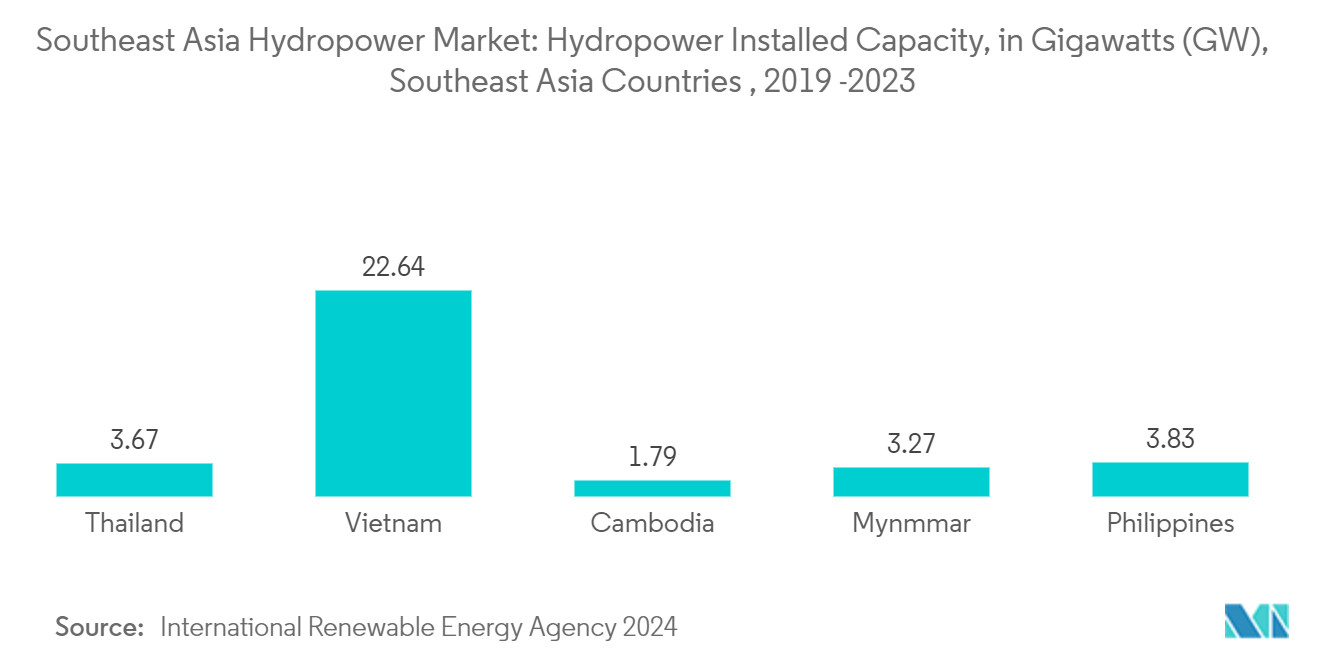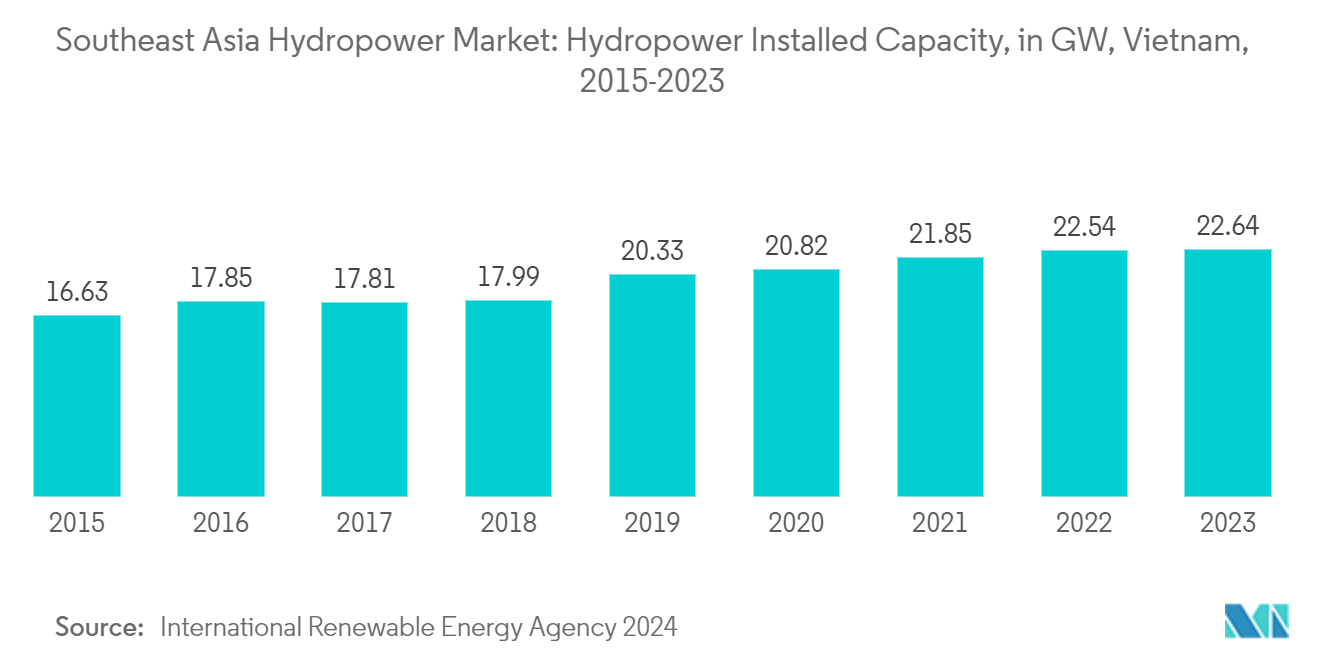Market Trends of Southeast Asia Hydropower Industry
The Large Hydropower Segment is Expected to Dominate the Market
- Large-scale hydropower plants use flowing water to drive huge water turbines and generate renewable energy. To generate significant amounts of hydroelectricity, lakes, reservoirs, and dams must store and regulate water for later release for power generation, irrigation, domestic use, and industrial use.
- Large-scale hydropower plants can be classified into four types: conventional hydroelectric dams, pumped storage, run-of-the-river, and tidal. Although large hydropower plants are expensive to install, they produce electricity at a low cost, especially in large cities. According to the International Renewable Energy Agency, the global weighted average levelized cost of energy (LCOE) of newly commissioned hydropower projects in 2022 was USD 0.048/kWh.
- According to the Laos Power Development Plan 2020 -2030, the hydropower capacity of Laos is expected to exceed 14 gigawatts by 2025. By 2025, renewable energy may represent 30% of the total energy mix, and hydropower is anticipated to be a major component of this growth.
- As part of the Association of Southeast Asian Nations (ASEAN) Plan of Action for Energy Cooperation (APAEC) 2021-2025, the aim is to reach 35% renewable generation in installed power capacity by 2025, which may require the deployment of 35-40 GW. In March 2023, the Indonesian government began construction works for the Mentarang Induk hydropower plant, and the project requires a USD 2.6 billion investment. With more than 1.3 GW of capacity, the power plant will be developed by PT Kayan Hydropower Nusantara, a joint venture of PT Adaro Energy Indonesia, PT Kayan Patria Pratama Group, and Sarawak Energy.
- Moreover, in 2023, hydropower installed capacity in Southeast Asian Countries such as Vietnam, Cambodia, Myanmar, and the Philippines stood at 22.639 GW, 1.791 GW, 3.269 GW, and 3.826 GW. In November 2023, Philippine-based renewable energy producer Repower Energy Development Corporation, the hydropower subsidiary of Pure Energy Holdings Corporation, launched its newest 1.4 MW run-of-river hydropower plant, the eighth of its kind in REDC’s portfolio. Located in Real, Quezon, between the Upper Labayat and Tibag hydropower plants, the Lower Labayat plant is estimated to generate 8 gigawatts per hour annually, utilizing the downstream current of the Labayat River.
- Owing to the above points, large hydropower plants are expected to dominate the market.

Vietnam is Expected to Dominate the Market
- Vietnam is one of the largest hydropower markets in Southeast Asia. According to the Electricity Authority of Vietnam (EVN), as of 2023, Vietnam had 22.639 GW of hydropower, accounting for nearly 30% of the country's total installed capacity.
- Hydropower has accounted for a significant share of the country's gross electricity generation mix, accounting for nearly 30.77% of the country's total electricity generation. The Vietnamese economy relied heavily on hydroelectricity to satiate domestic demand. However, as domestic demand increased rapidly, the share of coal-fired generation in electricity rose, along with other renewables, which have grown steadily but occupy a relatively smaller share of the total electricity generation mix.
- Due to its traditional dependence on hydroelectricity, Vietnam has already developed nearly 60% of its total hydropower potential, making it a mature hydropower market. According to the Vietnam Energy Outlook, the country is close to fully utilizing its potential for large-scale and medium-scale hydropower (defined as greater than 30 MW and typically with a connected reservoir). However, there is still untapped potential for run-of-river small-scale hydro of around 11 GW.
- Despite this, as the government tries to deal with the growing power demand, which is projected to grow by nearly 6-7% during 2021-2030 while realizing its emission reduction targets, the Vietnamese government is investing in the development of the remaining large-scale hydro potential in the country.
- In January 2024, State utility Vietnam Electricity (EVN) entered into 19 power purchase agreements for the acquisition of 2,689 MW of electricity from 26 hydropower plants in Laos during the 46th meeting of the Vietnam-Laos Intergovernmental Committee for Bilateral Cooperation in Hanoi. The signing of the agreements demonstrated deeper cooperation in electricity between Vietnam and Laos.
- Due to the above-mentioned factors, Vietnam is expected to dominate the market studied between 2024 and 2029.


